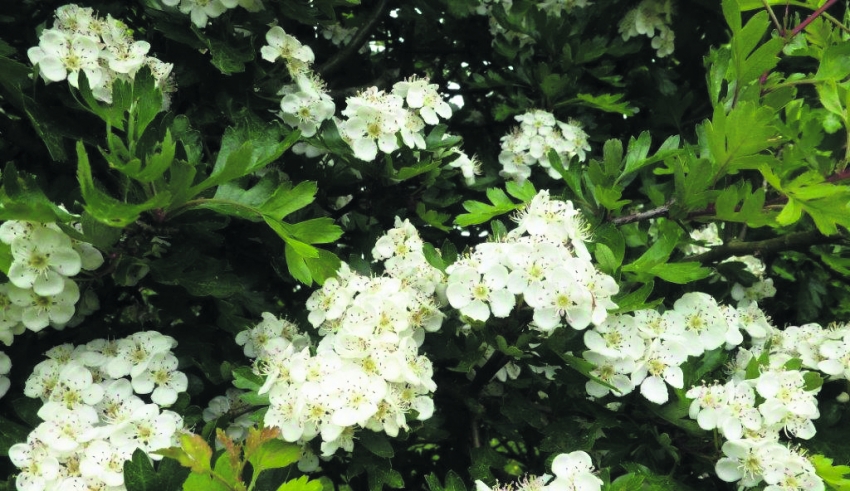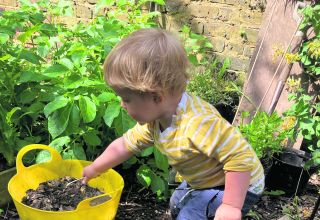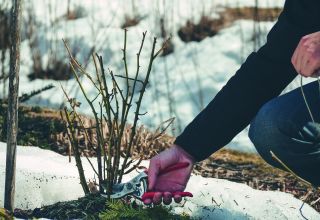
It may be that we have forgotten why and how to plant a native British hedge but opting for a easy to grow and maintain hawthorn will help the countryside fight back
Country hedges have a history going back to the Bronze Age, making them one of the oldest man made features in the British landscape.
They’re also beautiful things and a fantastic resource for wildlife and foragers. Of all the options you have when planting a traditional hedge, the hawthorn is perhaps one of the most under rated.
Planting a native hawthorn hedge will give you a colourful and secure hedge which is easy to grow and maintain and depending on which variety you choose will be spectacular.
Hawthorns are deciduous ornamental trees, many of which are suitable for even average-sized gardens. They look fabulous in late spring, covered in their flowers, and often again in autumn when glossy fruit and autumn leaf colours provide more interest and colour. Most produce glossy foliage.
They are also known as May flowers and May blossom. The old rhyme “Here we go gathering knots of May”, refers to the tradition of picking the flowers.
It is a slow growing tree in the apple family with a rounded habit and sometimes multiple stems. It makes a nice addition to a wildlife planting in a meadow or hedgerow with other fruiting trees. Birds, especially cedar waxwings, enjoy the berries and they also can be harvested and made into jams. Because of its size and three seasons of interest, hawthorn makes a great plant for small space gardens.
However, the tree can have sizable thorns that make it difficult to work around.
There are some thornless varieties on the market.
Planting a native hawthorn hedge will give you a colourful and secure hedge which is easy to grow and maintain and depending on which variety you choose will be spectacular.
Plant bare-root trees between through to April, and container-grown ones any time of year. Dig a hole two feet square and a foot deep. Add a layer of organic matter – such as compost or well-rotted manure – to the base of the hole and dig in. Place the roots in the planting hole and adjust the planting depth so that the tree is planted at the same depth as it was originally growing and the top of the roots are level with the soil surface.
Mix in more organic matter with the excavated soil and fill in the planting hole. Stake the tree with a rigid tree stake and two tree ties so that it is fully supported against the prevailing winds.
They need little or no maintenance pruning, except to remove dead, diseased or dying growth and to thin out overcrowded and rubbing branches. If pruning is needed, it is best carried out any time from late autumn to early spring.
As with all our native plants, common hedge species have unique relationships with native fauna. When they think about the food that they provide most people think about the berries for birds and small mammals – and larger mammals like gardeners! There’s a largely unnoticed community of animals further down the food chain, however, which depends on a hedge for other forms of sustenance.

Frosts are an enemy of the immature hedge. If there are heavy frosts after planting, the soil can break up, so the plants may need to be firmed in again. Severe frosts will cause damage to leaves – generally they will recover but weather damage is always a risk you need to be aware of, particularly with new plants.
In windy sites, the wind can ‘rock’ new plants opening up air pockets where either frost can get in or roots can be exposed to drying winds. Firm in the plants from time to time. Ideally evergreens need to be sheltered from drying winds during their first winter and growing season. If the weather is particularly severe or the site is subject to strong winds, it would be sensible to put up some windbreak netting to help prevent the plants drying out before their roots are established.
Hedge plants are planted close together so there is competition between the roots for nutrients and the trimming of hedges clips away much of the plant’s food-producing unit so an annual mulch of well rotted manure or compost or any annual feed of a foliar fertiliser is helpful to maintain vigour.










